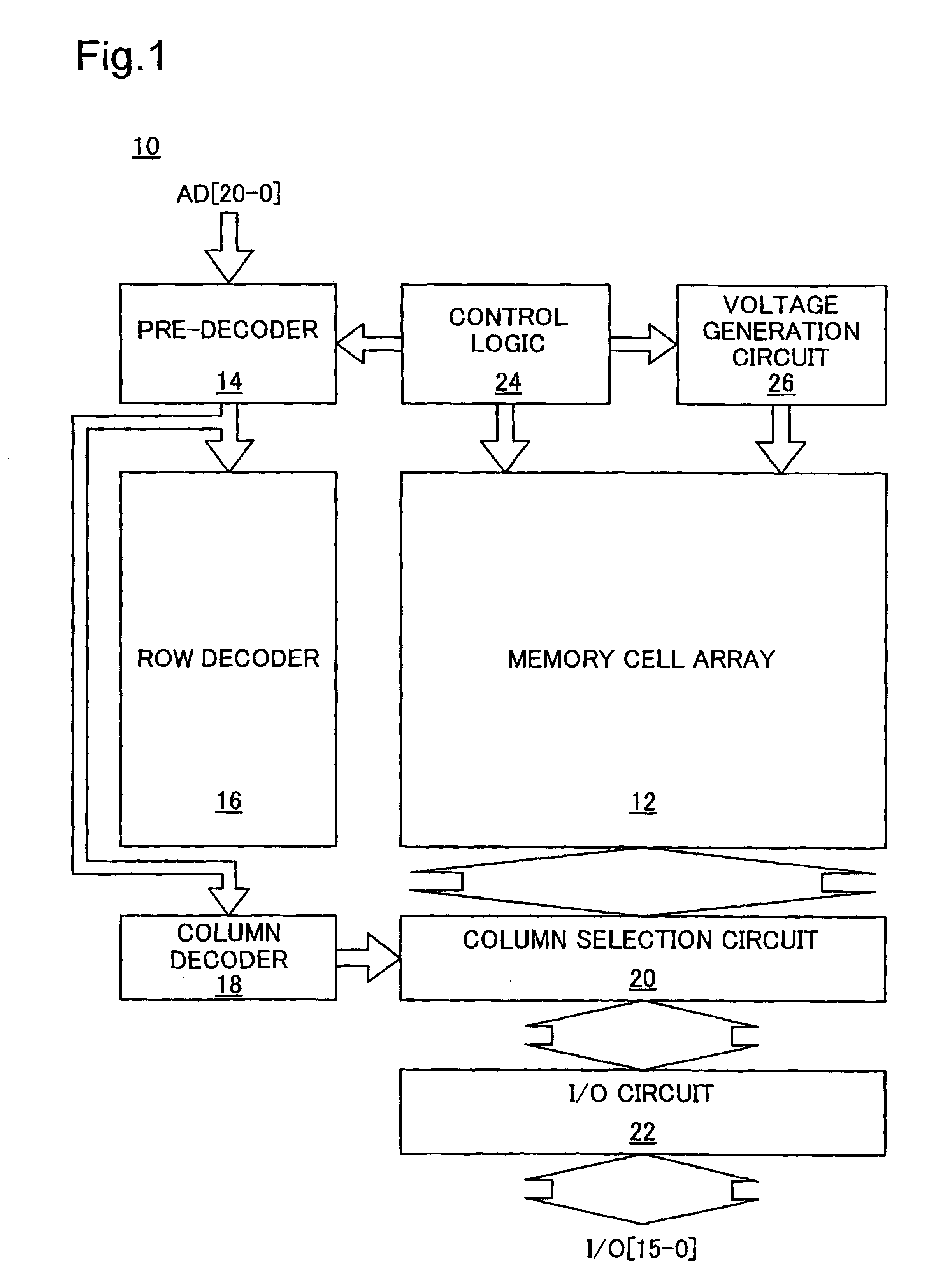Booster circuit for non-volatile semiconductor memory device
a voltage generation circuit and non-volatile technology, applied in semiconductor devices, solid-state devices, instruments, etc., can solve the problem of difficulty in setting the boosted voltage hv equal to the standby voltage, and achieve the effect of eliminating the parasitic capacitance, increasing the boosted voltage, and effectively interfering with the reference voltage increas
- Summary
- Abstract
- Description
- Claims
- Application Information
AI Technical Summary
Benefits of technology
Problems solved by technology
Method used
Image
Examples
Embodiment Construction
[0052]One mode of carrying out the present invention is discussed below as a preferred embodiment in the following sequence:[0053]A. Construction and Operations of Non-volatile Semiconductor Memory Device[0054]B. Structure and Operations of Memory Cells[0055]C. Structure and Operations of Voltage Generation Circuit[0056]D. Structure and Operations of Booster Circuit[0057]D-1. Operations at Power Supply ON time or at Reset Time[0058]D-2. Operations in Ordinary State[0059]D-3. Effects of Embodiment[0060]E. Modifications
A. Construction and Operations of Non-volatile Semiconductor Memory Device
[0061]FIG. 1 is a block diagram schematically illustrating the general construction of a typical non-volatile semiconductor memory device 10. The non-volatile semiconductor memory device 10 mainly includes a memory cell array 12, a pre-decoder 14, a row decoder 16, a column decoder 18, a column selection circuit 20, an I / O circuit 22, a control logic 24, and a voltage generation circuit 26. The no...
PUM
 Login to View More
Login to View More Abstract
Description
Claims
Application Information
 Login to View More
Login to View More - R&D
- Intellectual Property
- Life Sciences
- Materials
- Tech Scout
- Unparalleled Data Quality
- Higher Quality Content
- 60% Fewer Hallucinations
Browse by: Latest US Patents, China's latest patents, Technical Efficacy Thesaurus, Application Domain, Technology Topic, Popular Technical Reports.
© 2025 PatSnap. All rights reserved.Legal|Privacy policy|Modern Slavery Act Transparency Statement|Sitemap|About US| Contact US: help@patsnap.com



